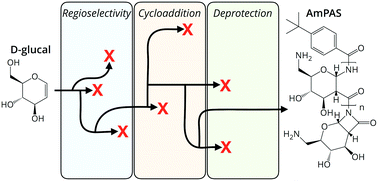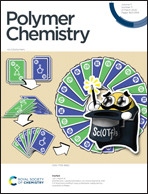Cationic poly-amido-saccharides: stereochemically-defined, enantiopure polymers from anionic ring-opening polymerization of an amino-sugar monomer†
Abstract
Efforts to develop synthetic carbohydrate polymers, despite their potential uses in biomedical applications, lag behind those of synthetic polypeptides and polynucleotides due to their structural complexity and the challenging methods associated with their synthesis. While carbohydrate polymers with functional groups such as carboxylic acids (alginic acid) and amines (chitosan) are used as hydrogels and nanocarriers for therapeutics, the potential for contamination, batch-to-batch variation, and poor chemical definition limits their translation to clinical application. Inspired by these challenges, we describe efforts towards the design and synthesis of enantiopure, amine-functional carbohydrate polymers with defined stereochemistry, narrow molecular weight distributions, helical confirmations, water solubility, and degrees of polymerization up to 50. Multiple synthetic routes are described, along with their limitations, to highlight the role of protecting group choices in the successful development of these polymers.



 Please wait while we load your content...
Please wait while we load your content...